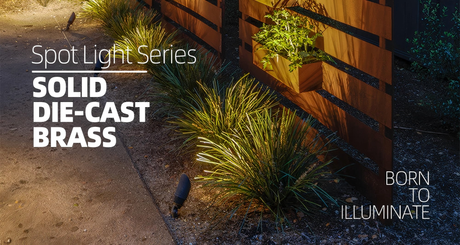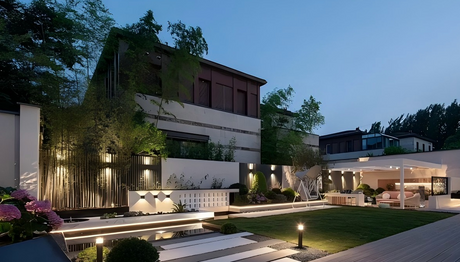Outdoor lighting creates a warm, inviting atmosphere for your backyard, patio, or garden—but it also has an unfortunate side effect: attracting swarms of bugs. If you’ve ever hosted an evening gathering only to spend it swatting away moths, mosquitoes, and beetles, you know how frustrating this can be.
But why are bugs so drawn to lights in the first place? And more importantly, how can you minimize this problem without sacrificing your outdoor ambiance? In this guide, we’ll explore the science behind insects’ attraction to light, the types of bugs most affected, and—most crucially—effective strategies to keep them away.
Why Are Bugs Attracted to Light?
The phenomenon of insects swarming around lights is called phototaxis—the movement of organisms in response to light. While scientists don’t have a single definitive explanation, several theories help explain this behavior:
1. Navigation Confusion (The "Moonlight" Theory)
Many nocturnal insects, like moths, use natural light sources (such as the moon and stars) to navigate. These distant light beams remain at a fixed angle, helping bugs fly in straight lines. However, artificial lights disrupt this system.
- When a moth encounters a porch light, it mistakes it for the moon and tries to maintain a constant angle to it, causing it to spiral inward.
- This explains why some insects fly in erratic circles around bulbs rather than just approaching them directly.
2. Heat and Infrared Attraction
Some bugs, like mosquitoes, are drawn to warmth and carbon dioxide (which humans exhale). While they’re more attracted to body heat than light itself, certain bulbs (especially incandescent and halogen) emit both light and heat, making them doubly appealing.
3. UV Light as a Food Source Signal
Many flowers reflect ultraviolet (UV) light, which pollinators like bees and butterflies use to locate nectar. Unfortunately, some artificial lights (particularly white and blue-toned LEDs) emit UV wavelengths, tricking bugs into thinking they’ve found food.
4. Escape Instinct (Light as a Safe Zone)
Some theories suggest that certain insects fly toward light because they associate darkness with predators (like bats). Bright lights may signal an open, "safe" space—though this doesn’t fully explain why they then get trapped near the light source.

Which Bugs Are Most Attracted to Lights?
Not all insects react the same way to artificial lighting. The most common culprits include:
- Moths & Beetles – Highly phototactic, often circling lights endlessly.
- Mosquitoes – Drawn to warmth, CO₂, and certain light wavelengths.
- Flies (including gnats & midges) – Often cluster around bright lights.
- June Bugs & Mayflies – Strongly attracted to UV and white light.
- Crickets & Grasshoppers – Occasionally drawn to lights but less predictably.
Interestingly, fireflies (lightning bugs) are an exception—they produce their own light and are rarely attracted to artificial sources.
How to Keep Bugs Away from Outdoor Lighting
Now that we understand why bugs flock to lights, let’s explore science-backed strategies to reduce their presence without eliminating outdoor illumination entirely.
1. Choose the Right Bulb Color & Type
Not all lights attract bugs equally. Research shows:
- Warm Yellow/Amber (2200K–3000K) – Least attractive to insects (mosquitoes are least drawn to long-wavelength light).
- Red & Orange Lights – Nearly invisible to most bugs.
- Avoid Cool White & Blue (4000K–6500K) – These mimic daylight and UV, attracting more insects.
Best Bulb Choices:
✔ LEDs in Warm Tones (Energy-efficient and low-heat)
✔ Sodium Vapor Lights (Often used in streetlights, less attractive to bugs)
❌ Incandescent & Halogen (High heat + broad-spectrum light = bug magnet)
2. Use Bug-Repelling Fixtures & Placement
- Position Lights Away from Seating Areas – Mount lights farther from patios and direct beams onto pathways or trees instead.
- Downward-Facing Fixtures – Lights shining upward attract more flying insects.
- Motion-Activated Lights – Reduces constant exposure, deterring bugs over time.
3. Incorporate Natural Bug Deterrents
- Plant Bug-Repelling Herbs (Citronella, lavender, mint, and marigolds near seating areas).
- Essential Oil Diffusers (Citronella, eucalyptus, or lemongrass oils can help repel mosquitoes).
- Fan + Light Combo – Many flying insects avoid strong breezes; a fan near lights can disperse them.
4. Install Physical Barriers
- Mesh Screens or Covers – For string lights or lanterns.
- Yellow Bug Bulbs – Coated to minimize UV emissions.
5. Chemical & Electronic Solutions (When Necessary)
- Bug Zappers (Controversial) – While they kill insects, studies show they may attract more than they eliminate.
- Mosquito Traps (CO₂-Based) – More effective than zappers for mosquitoes.

Final Thoughts: Balancing Light and Comfort
Bugs will always be part of outdoor life, but with the right lighting choices and strategic placement, you can drastically reduce their presence. The key takeaways:
✅ Use warm-colored LEDs (2700K–3000K) instead of cool white or blue.
✅ Position lights away from gathering spots and angle them downward.
✅ Combine lighting with natural deterrents (fans, plants, essential oils).
By understanding why bugs are attracted to light and applying these practical fixes, you can enjoy a well-lit outdoor space without the nuisance of swarming insects.









